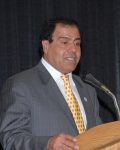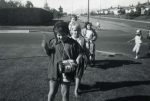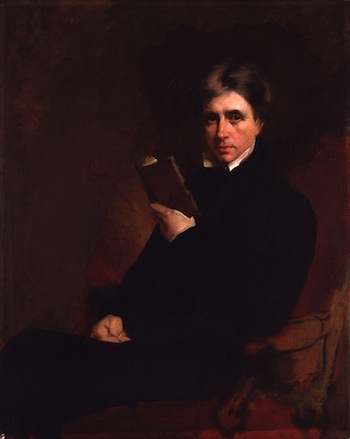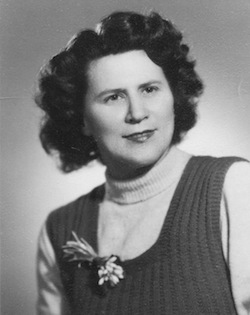Jenny and Zvika, 2002. (photo from Jenny Wright)
I am at Vancouver International Airport and U.S. Customs hands me a card asking the purpose of my visit to the United States. Is it business, pleasure, study? “None of the above,” I respond.
If I were to write a response, it would be: “To say goodbye to a lifelong friend who is leaving our world shortly.” Even at 65, it’s the first time for me to be traveling somewhere with a purpose such as this. And I never expected it to be Zvika (Irv Spivak), a childhood friend whom I have known longer than my husband.
At 15, we met at a rural boarding school in Israel. Two “misfits” or, should I say, creative souls, who had not quite grasped how to integrate into Israel’s society. Zvika was from New Jersey and myself, England. Our friendship flourished. Our mothers, both widows, also became friends.
Zvika was a natural comedian. He could imitate anyone. Presidents, cartoon characters, teachers and family members were only a few of the objects of his jokes. He mimicked accents and, when reciting a joke, it was told with such colour and credit, it became real.
Zvika loved to perform to an audience and I became his “informal” manager in Haifa. I introduced him to my good friends Ronit and Pini and several others and we became a close group. No party was complete without an hour or two of sketches. Nobody was ever excluded and tourists often made up half the parties we held. By midnight, we were laughing and crying uncontrollably, clutching our stomachs in pain. There were frequent complaints from neighbours and we were sure they thought we were drinking and smoking funny stuff but we were all high on pure laughter.
Zvika loved flying and had developed a series of international airline stewardess skits performed in numerous languages. Eventually, when the repertoire was over, I’d lead a round of Hebrew and English folk songs into the wee hours of the morning, with harmonies added by Zvika.
We didn’t know at the time that these carefree days would end very abruptly. On Yom Kippur, a coalition of Arab states launched a surprise attack, knowing that the majority of Israelis would be in synagogue. Zvika had stayed over and we were preparing to go out when the shrill siren began blaring. We looked at each other in disbelief. Today? Yom Kippur? The holiest day? Turning on the radio, we learned that Israel had been attacked by Egypt, Syria and Jordan. We headed to the shelter and remained there for several hours until the shorter siren indicated it was safe to leave.
Our lives took a different turn. I had been hired to perform on a cruise line heading to France and Zvika was planning to actualize his dream of becoming an airline steward.
Haifa’s port, however, was now closed indefinitely, so I offered to perform for the Israel Defence Forces military troops. Together with a magician and another musician, the newly formed Tsevet Havai Pikkud Tsafon (Northern Command Entertainment Troupe) was created.
Zvika was drafted as a medic and stationed somewhere near Nazareth.
En route to the Golan Heights after several successful performances, I realized we were passing army bases in Nazareth. “Stop, stop!” I yelled to the driver. “I want to visit my friend.”
Surprisingly, the driver complied and, moments later, I was hugging Zvika.
“Join us,” I said.
“Are you kidding? I won’t be allowed, even though I do very little here.”
“Let’s speak to your base commander,” I urged. Shortly after, we were performing our tunes for the commander and soldiers. With hearty applause, the commander understood how immensely valuable our music would be for the troops and permission was granted for Zvika to leave.
Our group performed in newly acquired territories: deserted villages surrounded by cattle and sheep, bunkers, and sometimes only a few miles from the bombings. We traveled to the Lebanese, Syrian and Sinai borders. The silent and somewhat eerie landscape filled with roars of laughter as Zvika carried out his sketches for the soldiers. We would learn later that, for some, this would be the last show they would see.
Eventually, Zvika was summoned to his base and I returned to Haifa to complete my previous plan.
Zvika moved to New York to become, you guessed it, an airline steward, and I moved to England. We’d reunite on special occasions. When I moved to Vancouver, my English friends threw a farewell party and Zvika flew over to attend and share all the skits with my friends. When he finally settled in San Francisco, we always stayed in touch.
Zvika’s larger-than-life personality drew people to him from all walks of life. Everyone felt that he was their best friend. He loved people, Cuban cigars and food and, before long, began selling diamonds at a Union Square store.
However, in 1989, he developed HIV and, with every visit, I began to wonder if it would be the last one. But, he overcame it and, in contrast, developed yet a larger tenacity with life.
He became a marriage commissioner, California-style. I was fortunate enough to attend Ronit’s daughter’s wedding and witness how eloquently Zvika created meaningful wedding vows. In 1997, he officiated more than 75 weddings and then branched out to do funerals, naming ceremonies, pet funerals and being the master of ceremonies at various events.
In March 2016, Ronit informed me that Zvika had been diagnosed with an aggressive form of bile duct cancer. He sent regular updates including this one: “The standard prognosis is four to six months or an additional year or two if chemo is successful. That being said, I was told 25 years ago that I’d be dead from AIDS after six months and we all saw how that prediction turned out. :-)”
I arrive at the hospice and my other lifelong friend, Ronit, is there to greet me. Zvika clutches my hand and I suppress my tears. In the days to come, he weakens. There are swarms of people coming in to say their final goodbyes. His friends move him to his house to die peacefully. I sing our old melodies to him. There are no harmonies. But, he is surrounded by love and care until his passing.
One of Zvika’s quotes was “My friends are my greatest blessing. I value honesty, loyalty and friendship. I love making new friends.”
Sixteen years ago, in a post-birthday note to all his friends, Zvika wrote: “If I were to die today … I’d die the happiest man ever to have lived and loved for knowing you. It has never been about the material things for me (hell, I’ve lost everything twice), it has always been about the memories of good times with each and every one of you. Your footsteps are indelibly etched in my brain. You are all my personal angels and friends.”
Jenny Wright is a writer, music therapist, children’s musician and recording artist. She also teaches creative writing and can be reached at [email protected].






